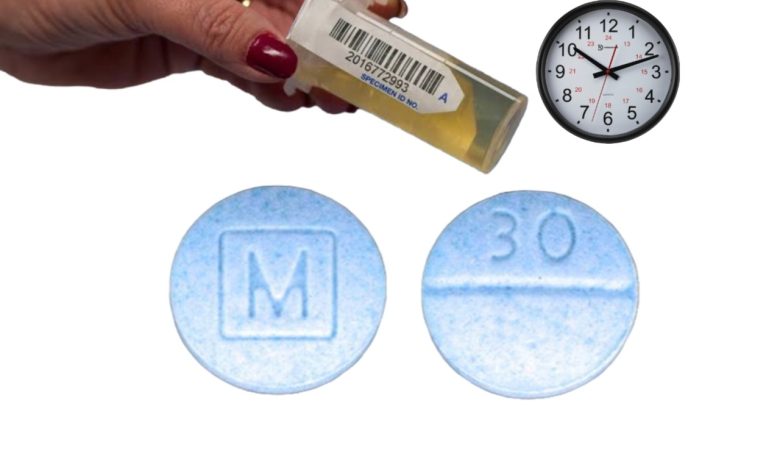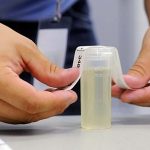How Long Does Oxycodone Stay In Your Urine

Oxycodone, a potent opioid analgesic, is commonly prescribed for the management of moderate to severe pain. As individuals undergo treatment with this medication, questions often arise about its duration of presence in urine.
In this extensive article, we will delve into the pharmacokinetics of oxycodone, exploring how the body processes this opioid, factors influencing its detection in urine, and considerations for drug testing.
Oxycodone Metabolism
Absorption and Distribution: Upon administration, oxycodone is absorbed from the gastrointestinal tract and enters the bloodstream. Its distribution throughout the body is relatively rapid, with peak plasma concentrations typically occurring within one to two hours after oral ingestion. The drug then binds to opioid receptors in the central nervous system, exerting its analgesic effects.
Metabolism in the Liver: Oxycodone undergoes extensive metabolism primarily in the liver. The primary enzyme responsible for the metabolism of oxycodone is cytochrome P450 2D6 (CYP2D6). This enzyme transforms oxycodone into its major metabolite, oxymorphone, which also possesses analgesic properties.
Elimination: The elimination of oxycodone and its metabolites occurs primarily through the kidneys. After undergoing metabolism, these compounds are converted into water-soluble forms, facilitating their excretion in the urine. The elimination half-life of oxycodone is approximately 3 to 4.5 hours, indicating the time required for the drug concentration in the plasma to decrease by half.
Factors Influencing Detection Time
Dosage and Frequency: The dosage and frequency of oxycodone use significantly impact its detection window. Higher doses and more frequent use can extend the time the drug remains detectable in urine. Additionally, the use of extended-release formulations may result in a longer detection period compared to immediate-release formulations.
Individual Variability: Individual factors, such as metabolism rate, age, weight, and overall health, contribute to variability in oxycodone elimination. Individuals with a faster metabolism may eliminate the drug more rapidly, shortening the detection window, while those with slower metabolism may retain oxycodone and its metabolites for a more extended period.
Liver Function: The efficiency of liver function, particularly the activity of the CYP2D6 enzyme, plays a crucial role in oxycodone metabolism. Individuals with impaired liver function may experience slower metabolism, potentially prolonging the detection time in urine.
Hydration Status: Hydration levels can impact the concentration of oxycodone and its metabolites in urine. Adequate hydration promotes the dilution of substances in urine, potentially reducing the concentration and shortening the detection window. Conversely, dehydration may result in a more concentrated urine sample, potentially extending the detection time.
Urinary pH: The pH of urine can influence the excretion of drugs. Oxycodone and its metabolites are excreted more efficiently in acidic urine. Changes in urinary pH, influenced by factors such as diet and certain medications, can affect the elimination rate and detection time of oxycodone in urine.
Concomitant Medications: The use of medications that interact with the same metabolic pathways can influence oxycodone metabolism. Inhibitors or inducers of CYP2D6 may alter the rate at which oxycodone is metabolized, affecting its presence in urine.
Detection Methods
Urine Drug Testing: Urine drug testing is a common method for detecting the presence of oxycodone and its metabolites. These tests often rely on immunoassay techniques, which can provide rapid results. However, it’s important to note that immunoassay tests may have limitations in terms of sensitivity and specificity.
Gas Chromatography-Mass Spectrometry (GC-MS) and Liquid Chromatography-Mass Spectrometry (LC-MS/MS): Confirmatory tests, such as GC-MS and LC-MS/MS, offer higher specificity and accuracy. These methods can distinguish between oxycodone and its metabolites, providing more reliable results. Confirmatory testing is often employed when initial immunoassay results are inconclusive or when a higher level of accuracy is required.
Detection Windows: The detection window for oxycodone in urine varies based on several factors, as discussed earlier. In general, oxycodone and its metabolites can be detected in urine for approximately 2 to 4 days after the last dose. However, this timeframe is an estimate, and individual variations may result in a shorter or longer detection window.
Considerations for Users
Patient Education: Patients prescribed oxycodone should be educated about the potential for urine drug testing and the factors that can influence the detection of the drug in urine. Understanding the variability in detection windows can empower patients to make informed decisions about their medication use.
Compliance with Prescribed Dosage: To optimize pain management and minimize the risk of extended detection times, patients should adhere to their prescribed dosage and dosing schedule. Deviating from the prescribed regimen may lead to fluctuations in drug concentration, impacting the detection window in urine.
Communication with Healthcare Providers: Open communication between patients and healthcare providers is crucial. Patients should inform their healthcare providers about all medications, including over-the-counter and herbal supplements, to ensure accurate interpretation of urine drug test results.
Pain Management Plans: Healthcare providers play a central role in developing comprehensive pain management plans. Periodic assessments, discussions about pain levels, and adjustments to treatment regimens can help strike a balance between effective pain relief and responsible medication use.
Legal and Employment Implications
Employment Drug Testing: In certain contexts, such as pre-employment or workplace drug testing, the presence of oxycodone in urine may have legal and employment implications. Employers often conduct urine drug tests to ensure a drug-free workplace, and the detection of prescription medications like oxycodone may require documentation from a healthcare provider.
Legal Prescription Use: Individuals with a valid prescription for oxycodone are generally protected by law when it comes to drug testing. However, it is essential to communicate openly with employers and provide documentation as needed to ensure compliance with workplace policies.
Conclusion
In conclusion, the detection of oxycodone in urine is influenced by various factors, including dosage, frequency of use, individual variability, liver function, hydration status, urinary pH, and concomitant medications. Understanding the pharmacokinetics of oxycodone and the dynamics of its elimination can provide valuable insights for both healthcare providers and patients.
Regular communication between healthcare providers and patients is essential for optimizing pain management while addressing concerns related to urine drug testing. By fostering an informed and collaborative approach, healthcare professionals can guide patients through the complexities of medication use, ensuring both effective pain relief and responsible drug monitoring.





